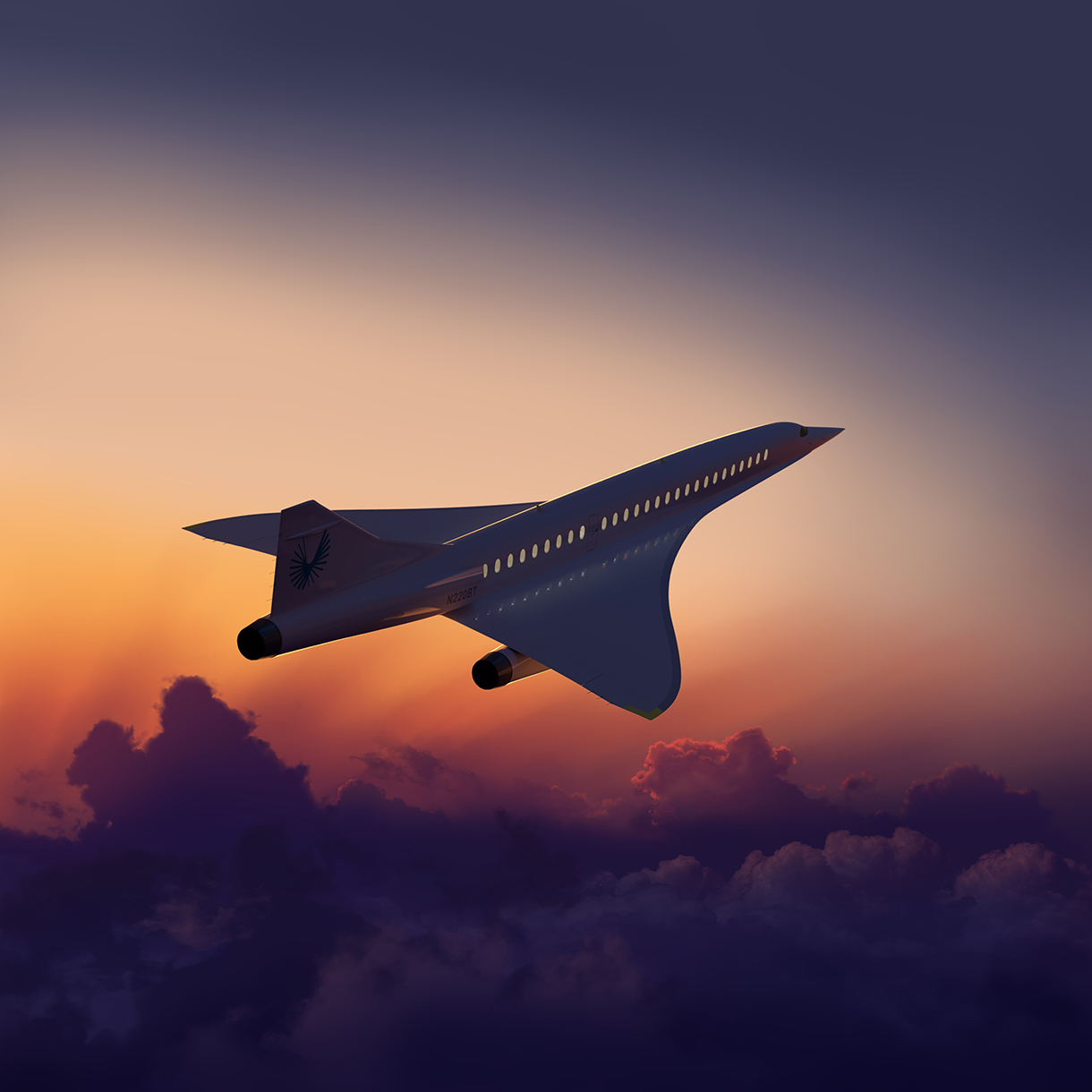
Tickets to Ride
The way we will travel in the not-too-distant future is out there.
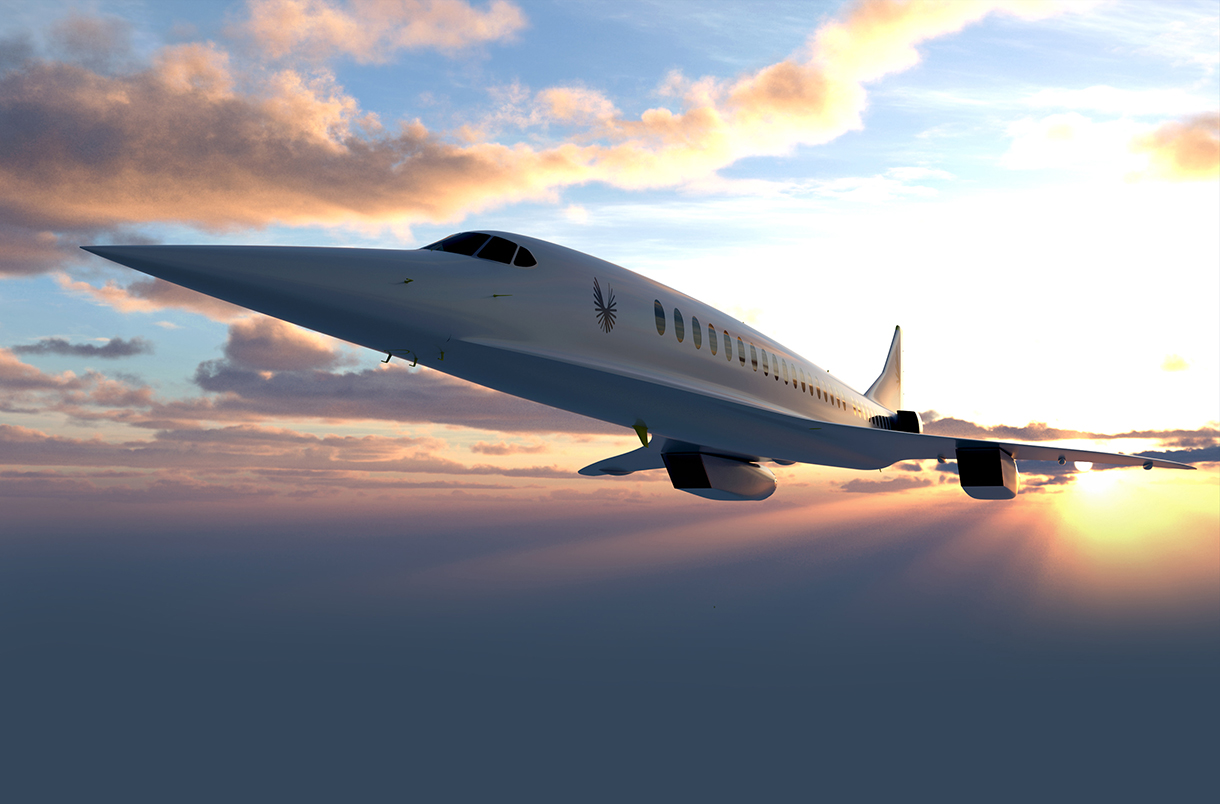
SUPERSONIC FLIERS
Fly anywhere in the world in four hours for $100. Achieving this goal may be a decade beyond the 2029 debut of Boom Supersonic’s (boomsupersonic.com) airplane, but it speaks to the audacious plans of the Denver-based aerospace company. United Airlines has ordered 15 of the company’s Overture planes that promise a Newark-to-London run in 3.5 hours. Flying at 60,000 feet at a speed of 1,304 mph (1.7 times the speed of sound), the new plane will make a flight time similar to the larger Anglo-French Concorde supersonic flier retired in 2003. The Overture carries 65–88 passengers in business class–style aboard a long, tapered aircraft (no middle seats) whose shape is designed to minimize noise. Most routes will be over water with a speed drop over coastal buffer zones around cities. In addition, Overture will use a new type of sustainable aviation fuel (SAF) to achieve a net-zero carbon footprint.

LONG-DISTANCE TRAINS
This is the train you won’t want to get off, assuming you can afford to get on. Thierry Gaugain (gaugain.net), best known as a designer of superyachts, has turned his attention landward with the design of a $350 million palace on rails that is part Orient Express and part Snowpiercer. The 14-car G Train caters to just a few with a love for long-distance rail trips of 10 hours or longer, featuring 18 suites in addition to an oversized owner’s suite, a dining car, a spa, and a “sanctuary” garden. One car has wings that fold down to create an al fresco terrace for special events, and the caboose holds the cars and recreational vehicles available for excursions.
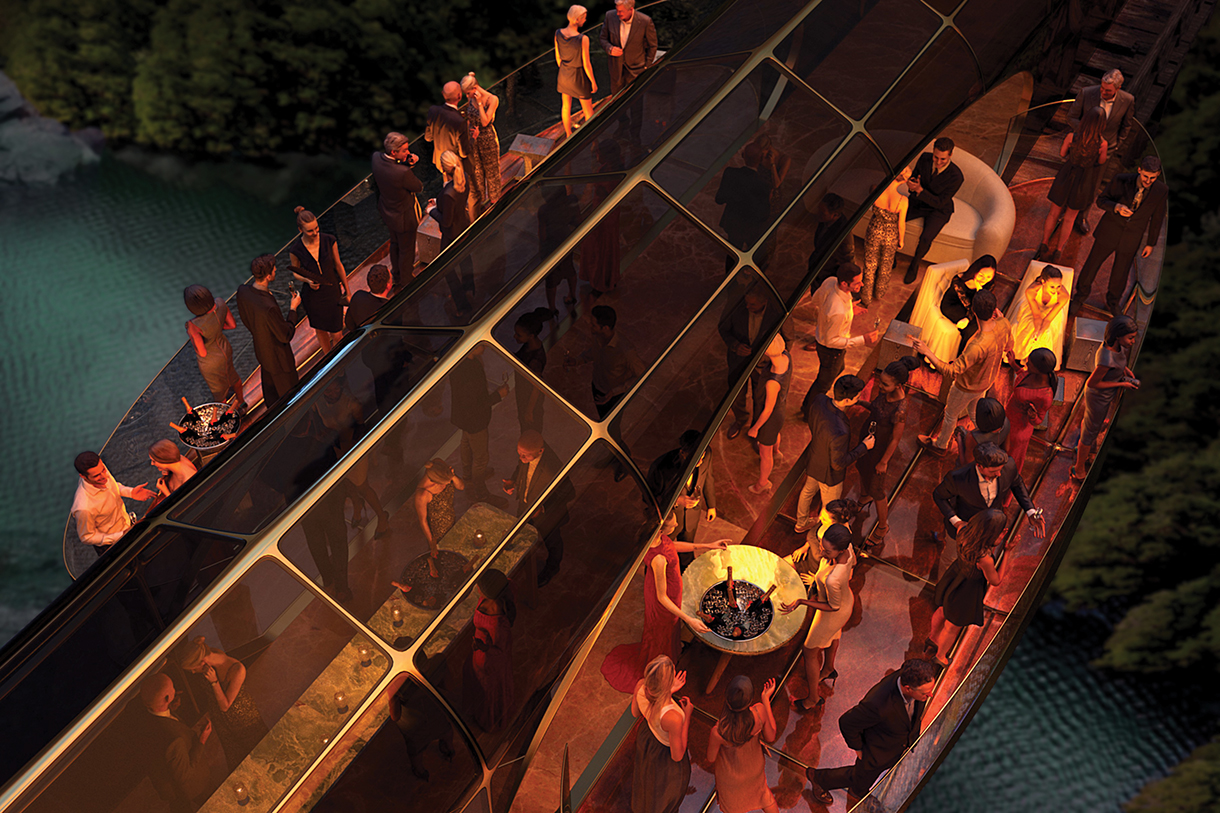
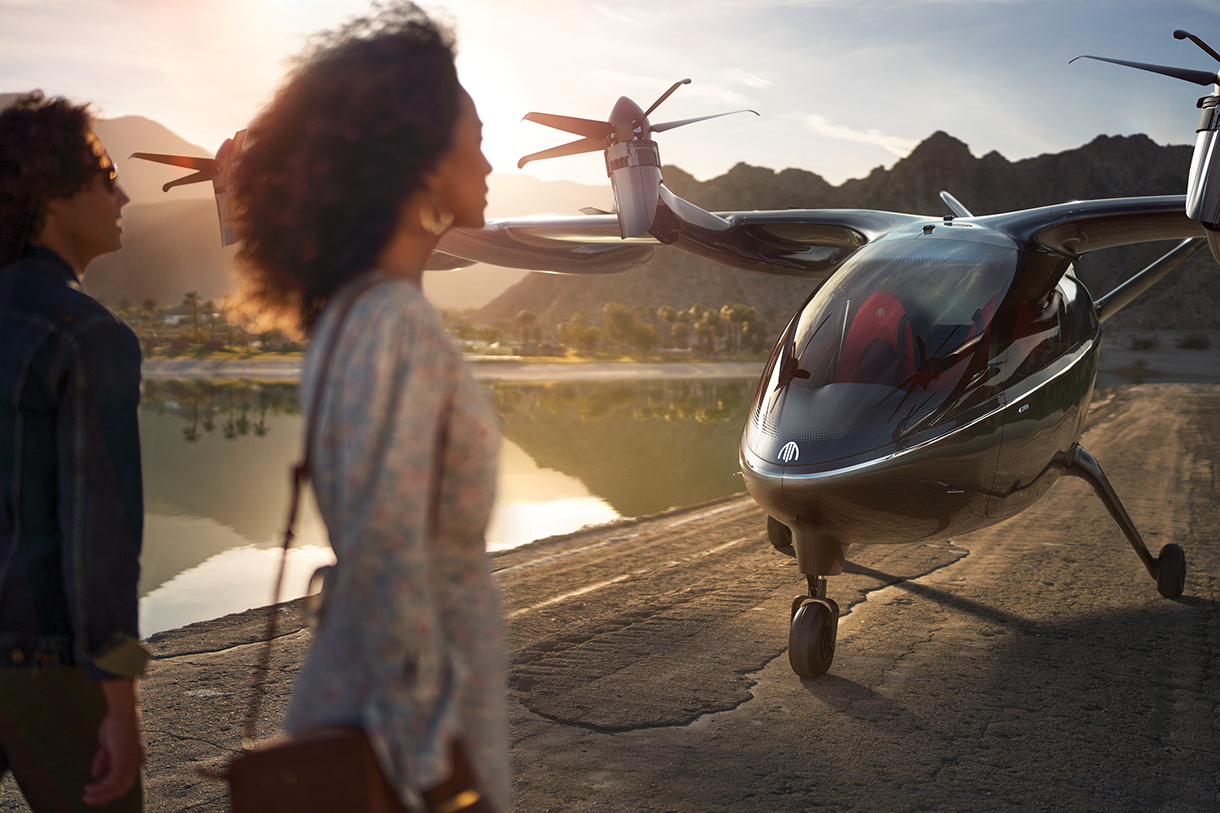
VTOL AIR TAXIS
The military’s V-22 Osprey vertical takeoff and landing (VTOL) craft is a veteran performer, so it was perhaps inevitable that VTOL would be adopted for civilian use. A VTOL aircraft can hover, take off, and land vertically—the best-known example is a helicopter. The new spin, though, is that forthcoming craft use electric propulsion (aka eVTOL) to power an array of maneuvering fans, an attractive option for quiet flying and zero emissions. Expect eVTOLs to come in a variety of sizes. The iFLY by NeXt (nextuas.com) is a personal, autonomous VTOL—just tap the onboard map and it flies to the selected destination. United Airlines has ordered 200 five-passenger VTOLs called Maker made by Archer Aviation (archer.com), which are scheduled to be airborne in 2024. Maker has a top speed of 150 mph and a range of 60 miles that will get you from downtown to the airport for a price comparable to a much slower Uber ride. American Airlines’ copycat move was to order 250 eVTOLs from Vertical Aerospace (vertical-aerospace.com).
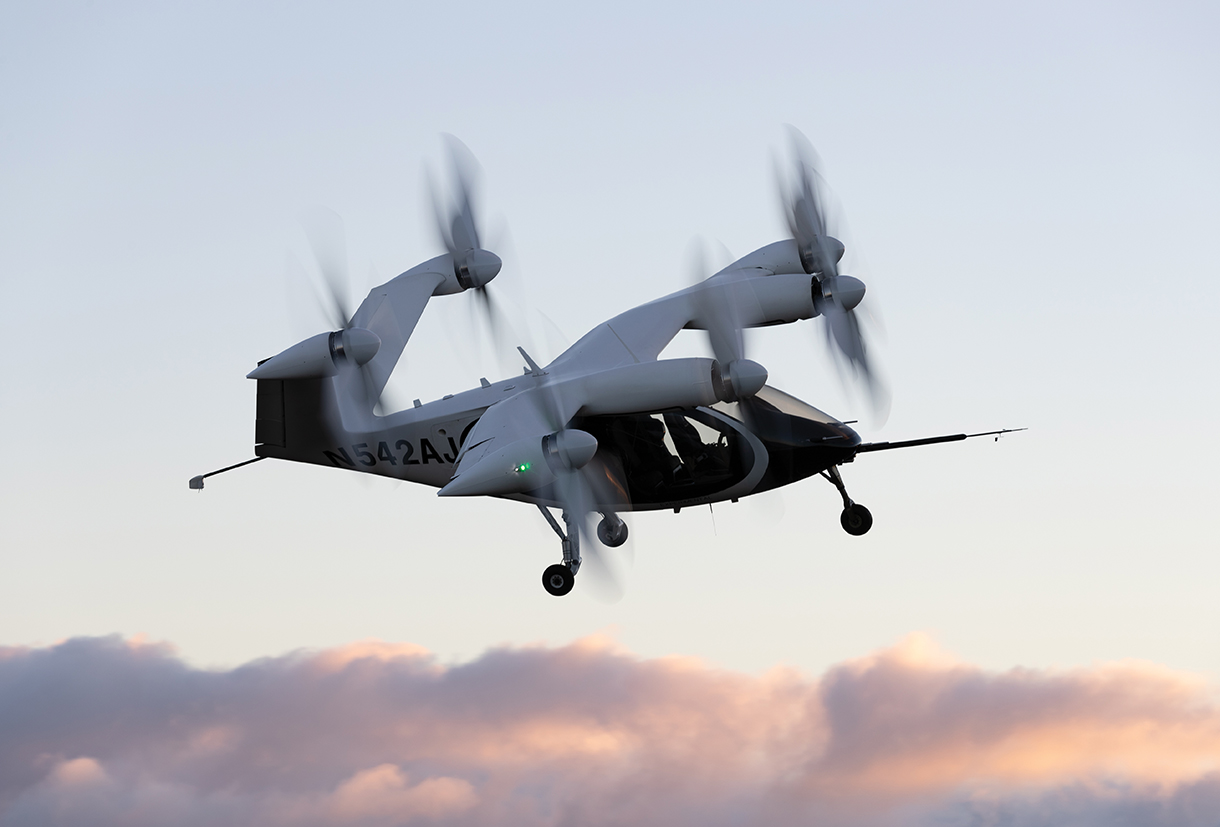
Similarly, Lilium (lilium.com), Joby Aviation (jobyaviation.com), Volocopter (volocopter.com), and Rotor X (rotorxaircraft.com) envision a flying taxi that would transport between four and six passengers. Going big are GKN Aerospace (gknaerospace.com) and Kelekona eVTOL (kelekona.com), both with larger aircraft proposals that would fly 30–50 passengers from park-and-ride style “vertiports” over congested areas, or act as one-hour shuttles between San Francisco and Los Angeles, for example. Radical design is a byword. The Kelekona craft, for example, uses four banks of fans to power a wide, chunky hull with a slight teardrop shape that provides lift in lieu of wings. Ultimately, eVTOLs are expected to be autonomous but initially most flights will have an operator on board as a trust-builder. Expect eVTOL aircraft to be airborne circa 2025.
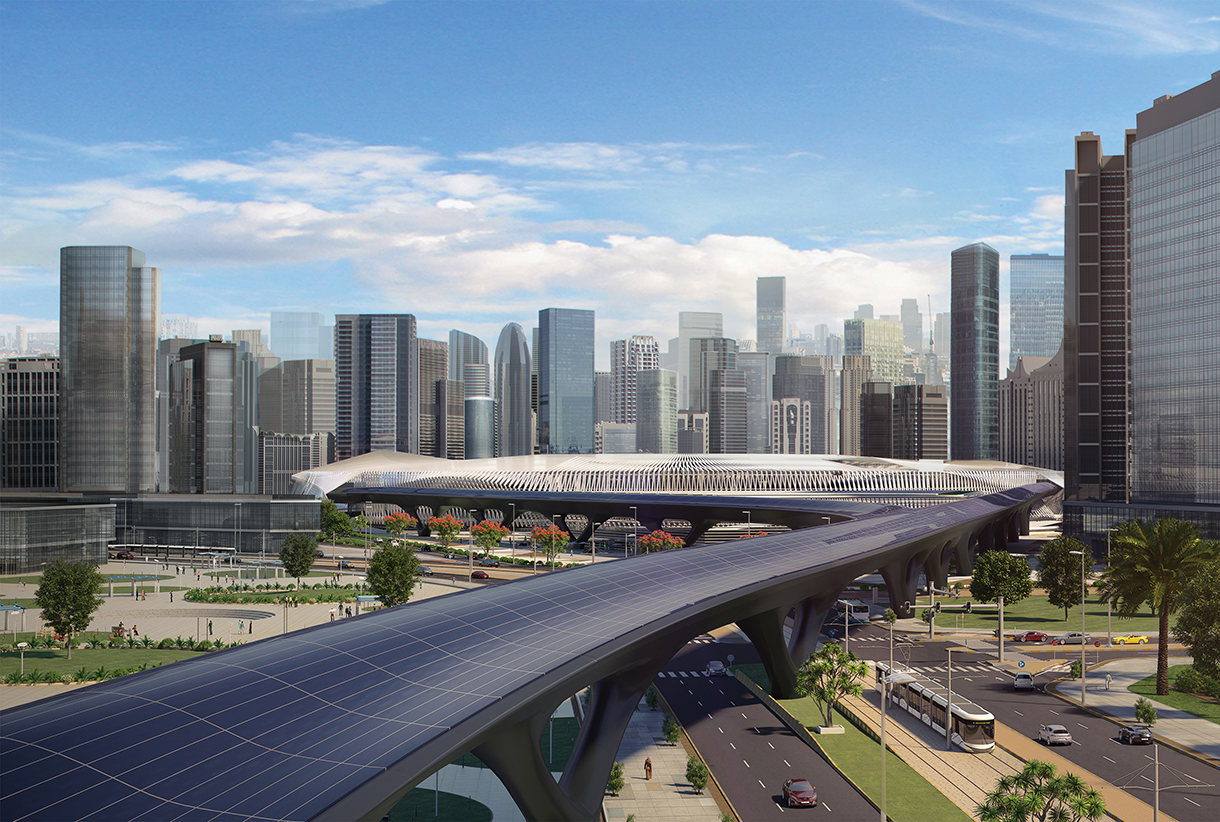
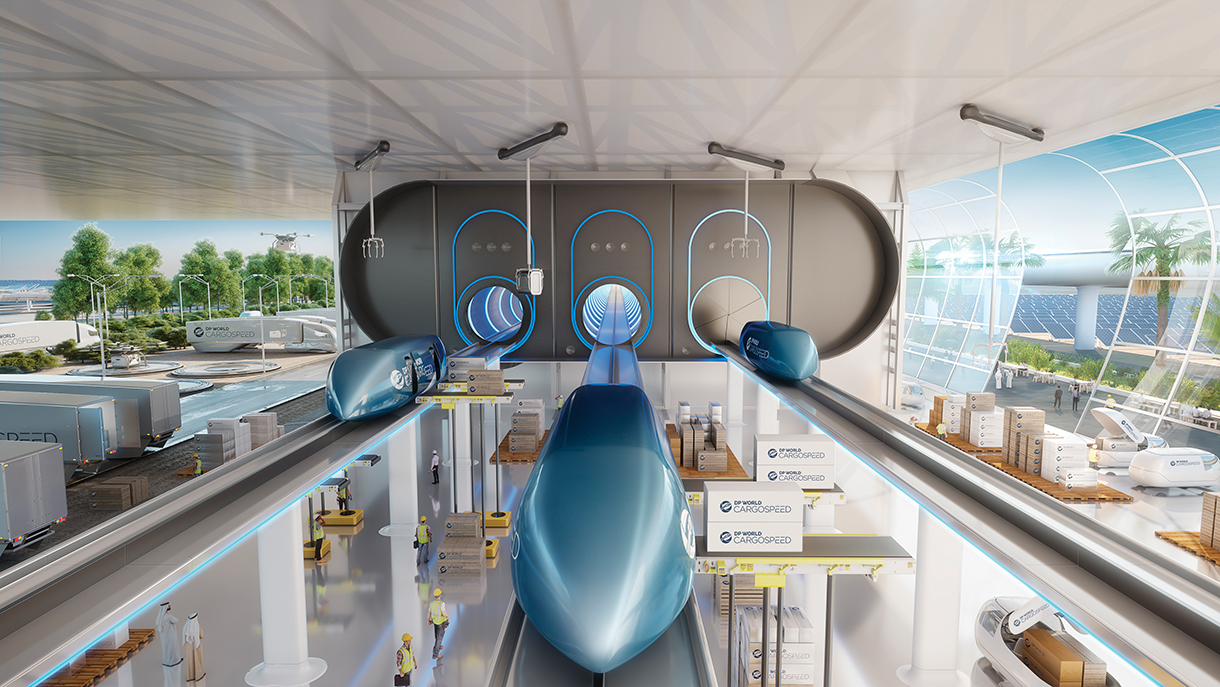
HYPERLOOP: THE FAST TRACK
Imagine hurtling comfortably in a capsule through a gigantic tube at speeds of around 700 mph to significantly reduce travel time between distant destinations. That’s the dream that Virgin Hyperloop (virginhyperloop.com) and HyperloopTT (hyperlooptt.com) are rushing to turn into a reality. Both companies utilize magnetic levitation technology to propel 20–30 passengers per pod through a low-pressure tube in a near nonstop stream that could move thousands of passengers per hour. A New York–to–Washington, D.C. run would take less than 40 minutes, for example. While the technology’s timeline is unclear, tests indicate the validity of the concept. Hyperloops would also significantly reduce carbon emissions. A keener eye, though, belongs to freight companies that see hyperloops as a very fast way to move cargo from harbors inland, and it’s likely that this would be the technology’s first implementation.
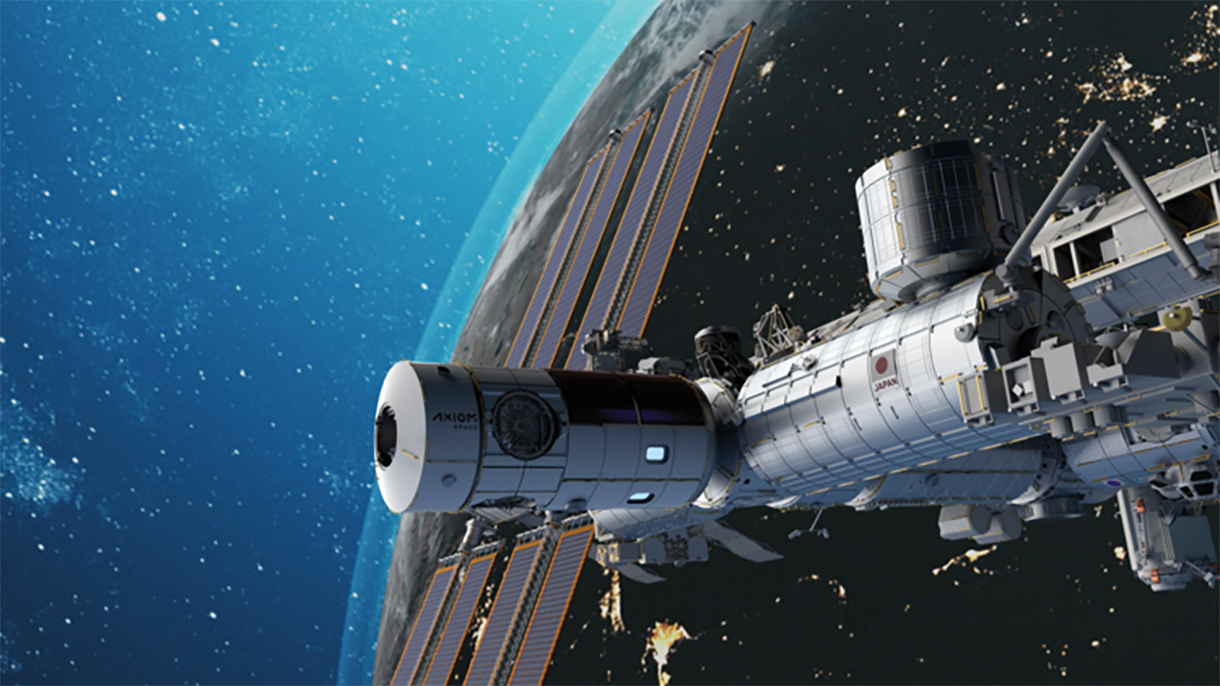
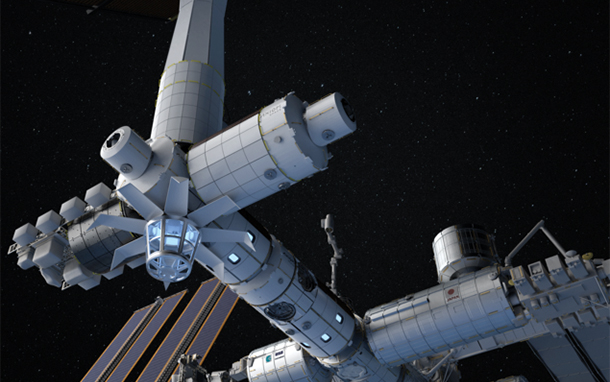

A space hotel is not as otherworldly a destination as you might think due to the privatization of space launches (such as Elon Musk’s SpaceX program) substantially lowering payload costs. Axiom Space’s (axiomspace.com) orbiting hotel is being taken very seriously, as it’s shepherded by Michael Suffredini, the former manager of NASA’s International Space Station (ISS) program. The general idea is that Axiom will launch a series of modules starting in 2024 that will attach to ISS. When ISS retires in 2028, as many project, to free up funds for deep space exploration, the Axiom modules would be spun off to create Axiom Station with rooms to rent. Axiom Station will be lusher than ISS, with interiors of the egg-like habitation module designed by Philippe Starck. The most ambitious proposal comes from Orbital Assembly Corporation (orbitalassembly.com). The company’s Voyager space station would be the largest man-made structure ever assembled in space with room for 280 guests and a crew of 112. Voyager would be like a giant ring with lunar gravity.
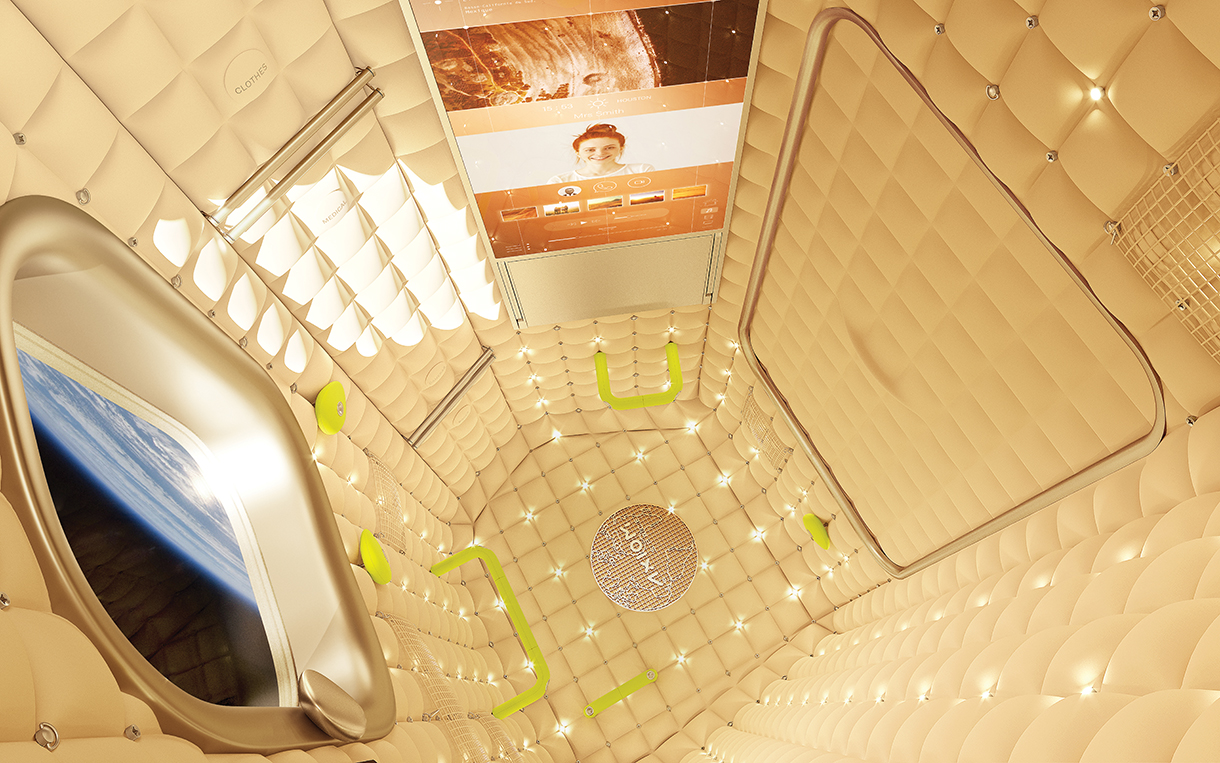
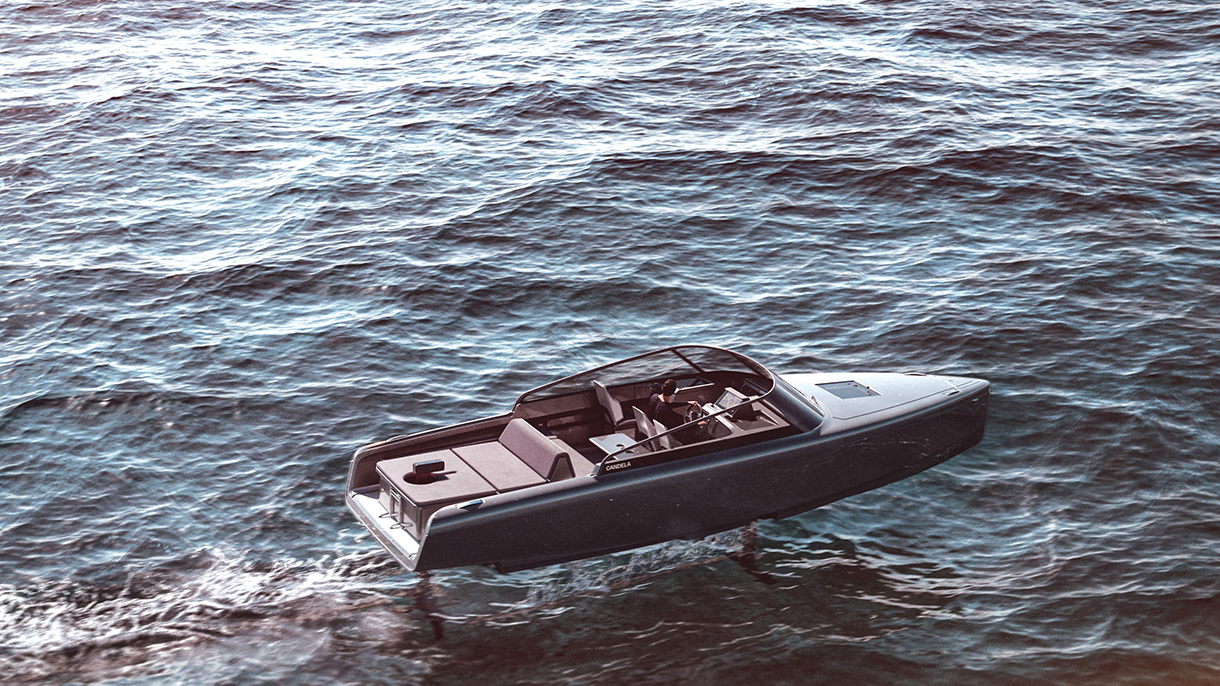
ELECTRIC BOATS
Turning boats into green machines is inherently difficult because of the weight of batteries onboard and the relatively limited range that battery power provides. The solution may be electric boats that, rather than gliding across the water, actually fly above it. The $335,000 Candela C-8 (candela.com) uses a technology already familiar to America’s Cup racing fans. At speeds above 16 knots, the eight-passenger boat rises out of the water on hydrofoils to achieve a top speed of 30 knots. The hydrofoils are linked to a computer that adjusts the blades 100 times per second for stability. Electronic fly-by-wire steering offers precise handling. The C-8 also operates silently at lower speeds, thanks to a newly developed C-Pod direct-drive electric motor. With the lightweight, carbon-fiber 27-footer riding above the waves to reduce drag, range increases to 50 nautical miles at 22 knots while using less power. By comparison, the operating cost of the C-8 is 90 percent less than a fuel-driven boat its size.
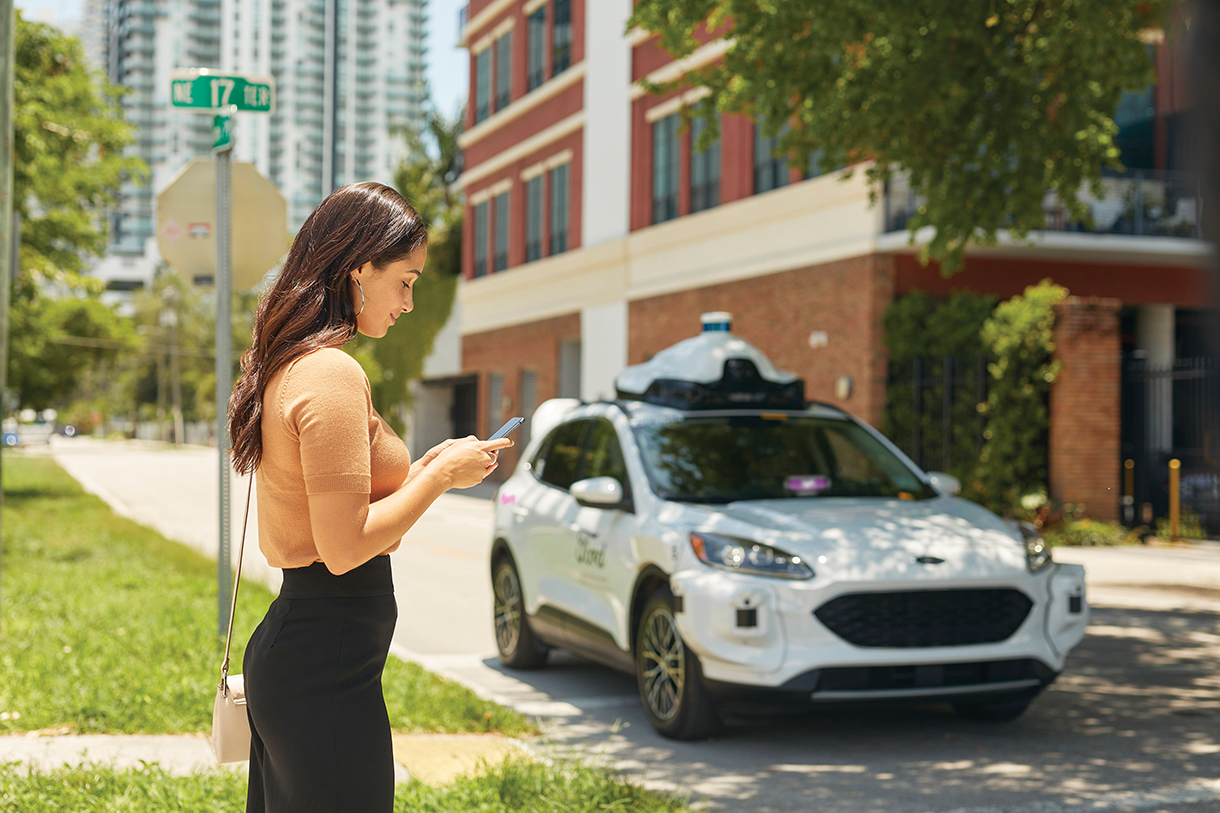
AUTONOMOUS TAXI
Ride-hailing services like Uber and Lyft are looking to take the driver out of the equation, although the transition might be measured in years rather than months. Lyft, for example, is partnering with Ford (ford.com) to deploy autonomous vehicles (with a safety driver onboard for emergencies) in Miami this year and next year in Austin, Texas. Companies like Waymo, Cruise, and Zoox are headed in a similar direction and will likely add sophisticated sensors like lidar to their vehicles to supplement cameras and radar. One interesting variant is devised by Halo (halo.car): Use an app to order an electric car, which is driven by remote control to your location for your use, then remotely driven to its Halo home when you’re done with it. Autonomous vehicles may not have an unlimited run, and countries like the UK are considering a cap on their number.




